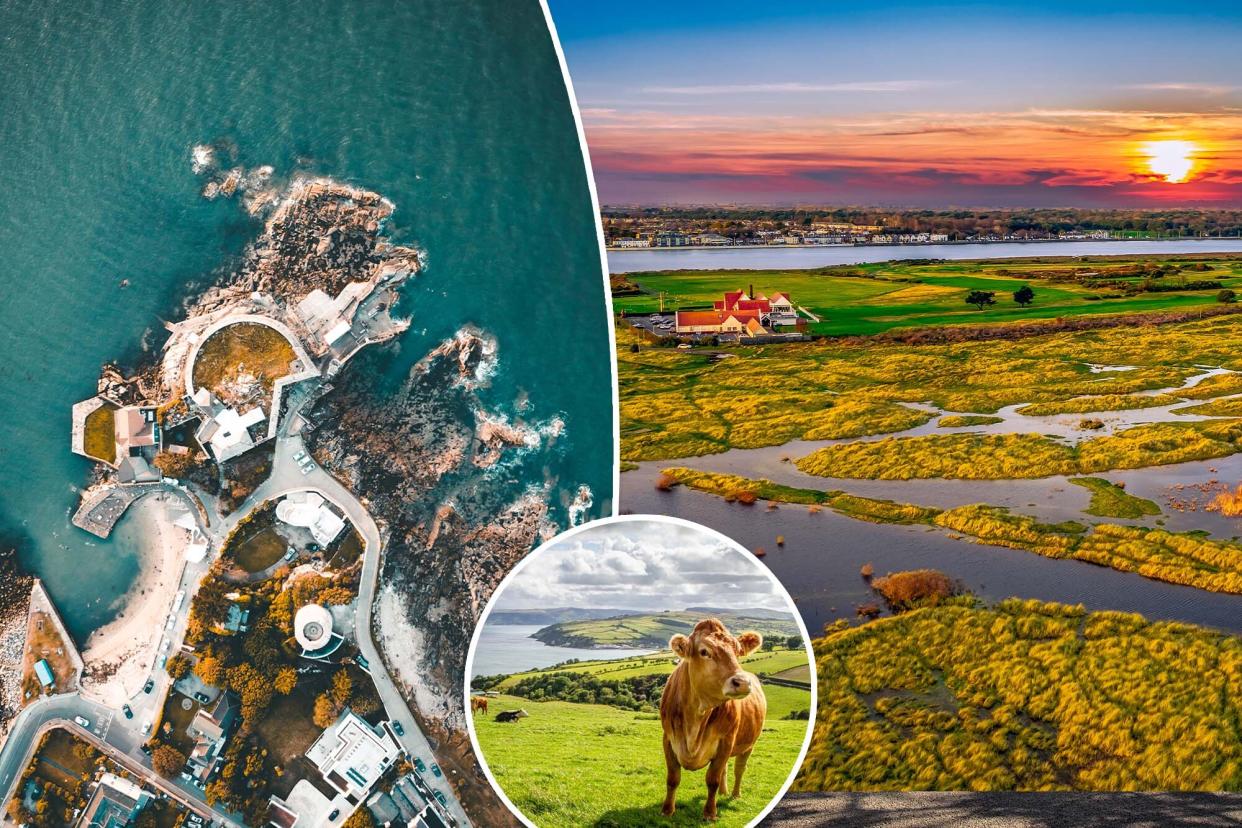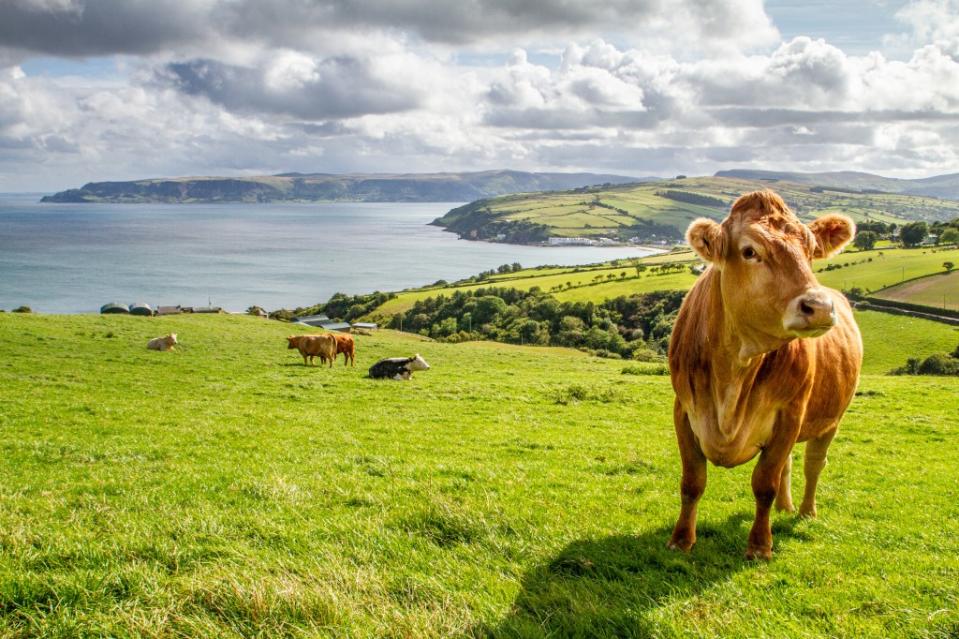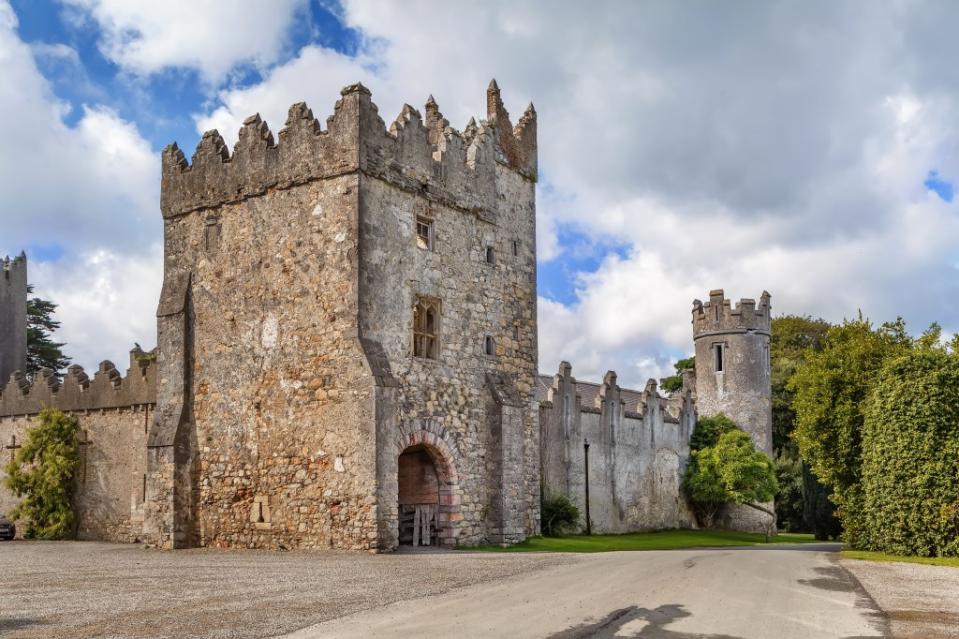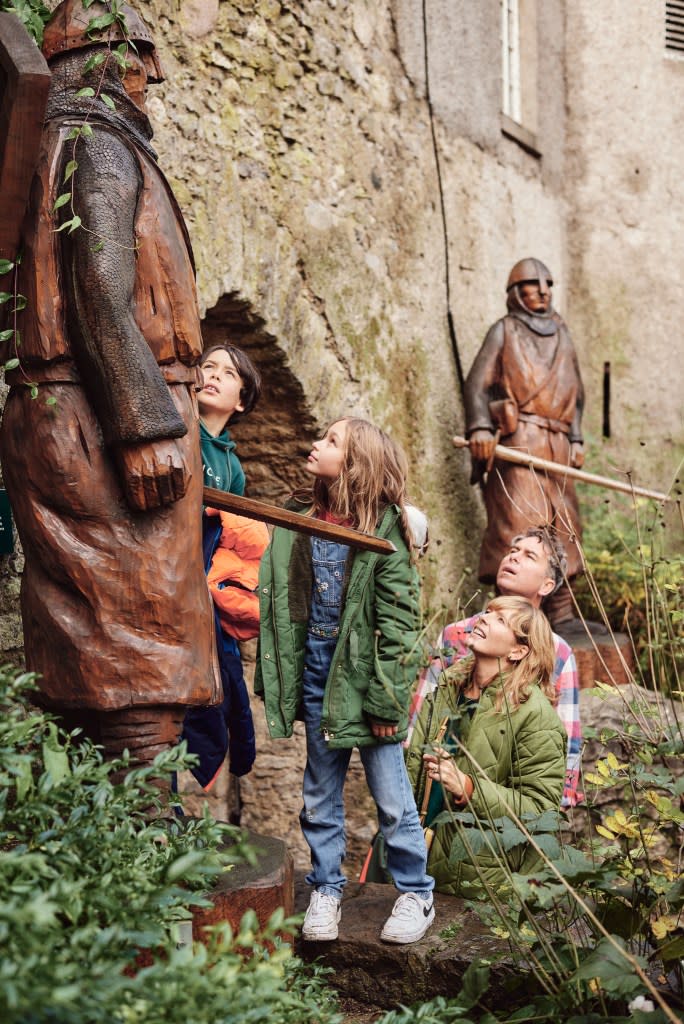Exploring the villages, pubs and castles of Dublin’s answer to Malibu

- Oops!Something went wrong.Please try again later.
Visitors to the Irish capital may think of the city’s waterfront as the banks of the Liffey, the river that cuts through town. But the Dublin coast — a C-shaped stretch of bay that begins just east of the city center —is suddenly in the spotlight.
That’s thanks to the success of “Bad Sisters,” the award-winning Apple TV+ black-comedy thriller that’s set on Dublin’s shores.
A show many have introduced those across the pond to the rugged beauty of the Irish Sea, but it’s no secret.
Locals have long rambled its scenic seaside trails punctuated with medieval architecture, craft shops, seafood spots and, of course, pubs.

“For me, the great appeal of the coast lies in its diversity,” said concierge Edward Burke, who has been at Dublin’s Westbury hotel through its entire 40-year existence. “There are cliffs, castles, beaches and some of the prettiest villages in Dublin.”
“Bad Sisters” shot as far north as the villages of Malahide and Skerries and as far south as the Forty Foot, in Sandycove, a stoney outcropping from which Dubliners take a traditional dip in the frigid waters on Christmas Day.
In between these poles, and on the shores of these practically polar waters, you’ll find much to enjoy. Here, some favorite highlights.
Nature Calls
Seals, whales, dolphins, seabirds and more frolic in the waters and on the shores of Dublin Bay, a protected UNESCO Biosphere zone since 2019.
On a peninsula that juts out from the north end of the bay, the various routes of the Howth Cliff Walk provide panoramic water and wildlife views south and west into the bay itself, east out to the Irish Sea and north to the island called Ireland’s Eye. (While you’re in the area, the village of Howth itself is well worth a wander, too.)
Other wild and wonderful stops include the sand dunes and salt marshes of Bull Island’s nature reserve, the trails of Irishtown Nature Park, on a reclaimed urban parcel once used as a dumping site for construction materials, and the viewpoints of Killiney Hill Park in the south.

Living History
The Coast is also home to a generous handful of medieval castles, not least Howth Castle, which gets a shout-out in the opening lines of James Joyce’s “Finnegans Wake” and whose history goes back to 1177.
Much of what you’ll see there today dates to an early-20th-century design by British architect Edwin Lutyens, who famously built a particularly posh part of colonial New Delhi.
Occupied by members of the same family for 800 years, the house hosts Irish cooking classes in its 18th-century, Georgian-style kitchens.
A bit north, you’ll find Malahide Castle, whose draws include the imposing, turreted, thickly stone-walled building, as well as botanical gardens, trails and a butterfly house that sit on its 250-plus acres of parkland. Towards the southern end of the bay, the fortified, 14th-century, Dalkey Castle, in the middle of the village from which it takes its name, offers tours that transport you back to the time of the Vikings. (Dalkey served as Dublin’s main port in medieval times.)

Stops to Sip and Savor
Make like the sisters of “Bad Sisters” fame and stop in at Gibney’s in Malahide— a village where much of the show was filmed — for a pint or a bit of Irish whiskey plus classic pub fare.
In Howth, the evocatively named Bloody Stream earns rave reviews, too. Down the coast in Sandycove, try the freshest of locally caught fish at the recently opened second restaurant outpost of Cavistons, a seafood emporium that’s been in operation since 1948.
They can even pack you a lovely “hamper” — aka, a picnic basket — for a seaside alfresco lunch.
In and On the Water
Beyond the Forty Foot, other locally popular swimming spots include Seapoint Beach, just outside of Dún Laoghaire, whose marina is home to the National Maritime Museum of Ireland and Whiterock Beach in Killiney, whose calm waters, relatively soft sand, and centuries-old Vico Baths make it a good choice for families with little one.
Up and down the coast, opportunities abound for kayaking, stand-up paddleboarding, sailing and even surfing.
Getting There
By car, you can be at the coast from the city center well within 30 minutes, depending on where you start and where on the coast you want to end up.
Public transit is also a great option, with high-frequency DART (Dublin Area Rapid Transit) trains making frequent stops up and down the coast, in pretty much every one of its charming villages.
There’s also a dedicated bike path along North Wall Quay of Liffey in the city center that connects to the coastal cycleway and takes you all the way out to Howth.

